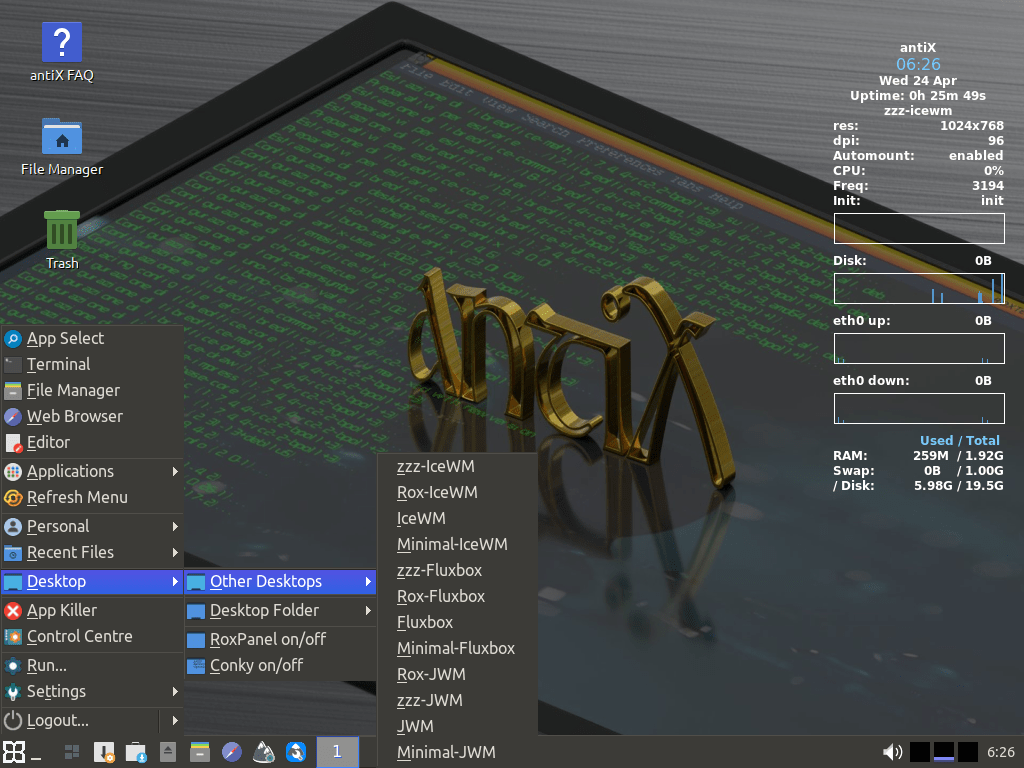My favorite trick to reviving old computers is trying to find ways to get them to run off of solid state storage. It really makes a huge difference. You will be surprised by how much more tolerable classic computers are when you no longer have to deal with slow storage mediums.
Mind you this doesn’t make them modern levels of fast and you no longer get the satisfaction of hearing the hard drive grinding away when you open a window but thems the tradeoffs…sigh…
And if your computer can’t even handle that, there’s always Tiny Core.
My 25 year old PII with 192MB of RAM is surprisingly responsive with TCL.
Oooh, I have an old Vaio PictureBook Id like to eventually revive. Currently it’s running a very old Mandrake from that time (with KDE). Not sure if I can fit something more modern on it.
Looks like it would work. I did have an adapter lying around that let me use a CF card instead of a spinning disk, so that helped.
The biggest hassle was getting the thing to start because boot from USB didn’t really exist back then so I had to burn a CD and the drive on that machine is kind of flaky these days.
Though I will say that it’s not exactly usable. Pretty much any website makes it grind to a halt. But it’s good right up until then.
That machine was quite annoying because it refused to boot off anything other than its internal disk or an external floppy i.e. no USB sticks, despite it having a USB port. Even back then, stuff was mostly coming out on ISOs for CDs and floppies were phased out. Nowadays it’ll probably require a bit of tinkering (and I’ll have to find a floppy).
Oof. Yeah, that would be tough.
I think I have a floppy or two around, but the only drive for them is on that machine and I wasn’t really willing to put any money into the project.
Runs on an 10 year old Toshiba mini NB505 Netbook
Running on my Acer Aspire netbook now. Definitely slower than any modern device but when I do CLI stuff I can barely tell. Biggest gripe is the lack of systemd. Not that I like systemd, but some tools don’t get on well without it.
I have been playing around a bit with both Antix and Damn Small Linux 2 that is based on it. I have been quite impressed.
First, it is really just Debian curated to be light-weight. You have full access to all the Debian repositories.
The 32 bit versions also work great. I booted to a fully working desktop on a 32 bit system and only 84 MB of RAM was being used. On top of that I ran Firefox, LibreOffice, Scribis, GIMP, and I think other things and was still around 900 MB. It would be amazing on ancient hardware.
Seems like you can add MEPIS to it and get MX Linux:
The development of MX Linux is a collaborative effort between the antiX and former MEPIS communities.
MX Linux is great! I didn’t think it’s recommended for super old PCs computers though…
This was my entry into Linux, and love it so far. My Windows 7 computer has generally been so snappy. Even without an SSD and only 4G in RAM it starts faster than my Windows 11, 32GB, i7 laptop.
If it runs Windows 7 snappily, it’ll probably run Linux systems with XFCE or even Cinnamon perfectly well, too.
Is it pronounced “antics” or “antiques”?
Searched but can’t find it in their FAQs :) They work together with MX Linux, so personally I’d go for Anti Ex and Em Ex Linnuks.
If they are anti X why dont they use Wayland then.
😀 Yeah right, maybe it should indeed by pronounced like something like antique /j
Everyone I’ve heard mention it pronounces it as antics so I guess that’s the right one
Just wondering because “antiques” seems fitting given the target hardware.
I used antix on my laptop. Very nice actually.
I have an old laptop with a Transmeta Crusoe CPU. Can anyone recommend a distro that will work on it? I’ll download this one and give it a shot too.
I have an old laptop with a Transmeta Crusoe CPU. Can anyone recommend a distro that will work on it? I’ll download this one and give it a shot too.
You have a computer with a CPU made by the company that Linus Torvalds worked for!
Yes, and one of the reasons I want to keep it going. It’s an old Fujitsu and has a cool form factor (another reason). I recycled about a dozen laptops a few months back, but could not bear to see this one go. It came with XP, but I don’t care to reload that at all. Am also downloading older versions of Slack to see if they’ll work.
Yes, and one of the reasons I want to keep it going. It’s an old Fujitsu and has a cool form factor (another reason). I recycled about a dozen laptops a few months back, but could not bear to see this one go. It came with XP, but I don’t care to reload that at all. Am also downloading older versions of Slack to see if they’ll work.
👍 🐧
Tried it on an Asus eeePC after an SSD swap, nice and kind of fun to use distro.
My favorite way of reviving ancient 32 bit hardware is installing Haiku. It’s such a cool little OS, even if it can’t do all the tasks modern Linux can.
Haiku is getting pretty nice actually. With the Falkon browser, it may be getting pretty close to daily drivable for a lot of people.
I agree that it is a cool little system. I think the 32 bit version is still compatible with BeOS though I have not tried that in a while.
Hardware support is a bigger impediment than functionality at this point.








